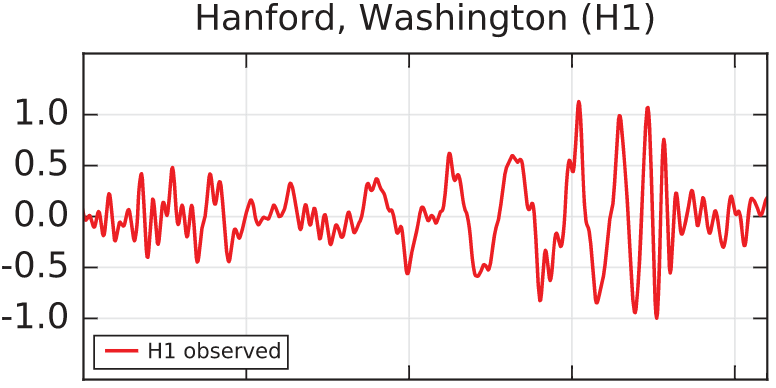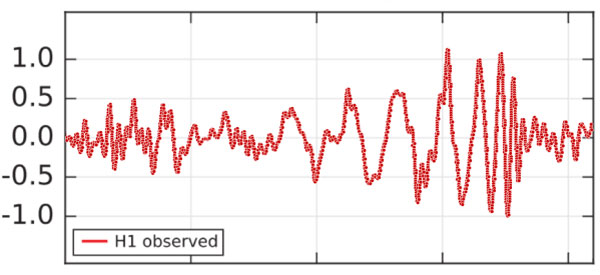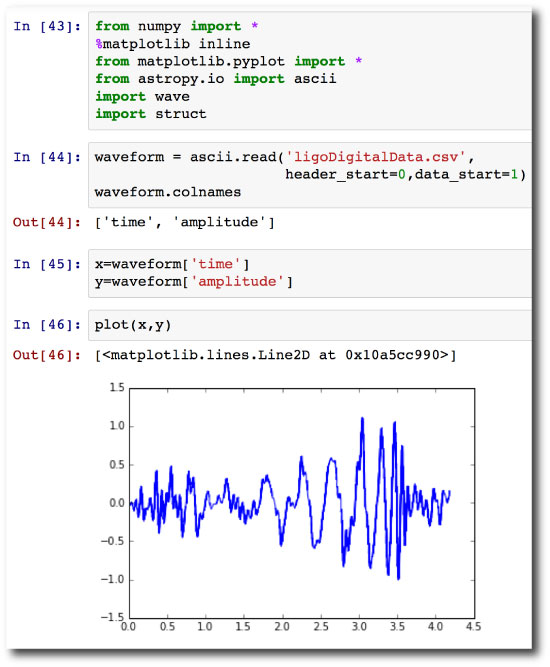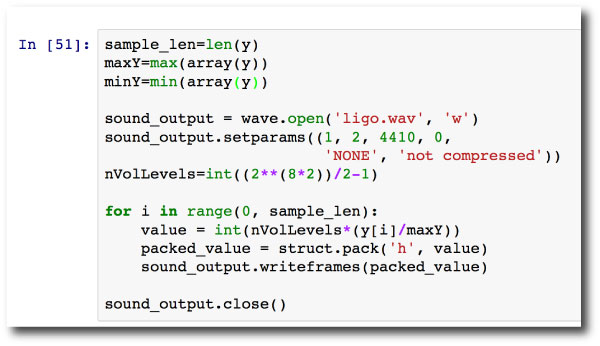As with everyone else, LIGO made my day.
It’s interesting that transverse waves of spatial strain — ripples in spacetime — are consistently described as “sounds” in the media presentations. For example, the APS commentary accompanying the Physical Review Letter on GW150914 is entitled The First Sounds of Merging Black Holes.
Quite frankly, Python is a threat to the scientific guild. What used to require esoteric numerical skills — typing in recipes in Fortran and stitching them together, or licensed packages, “seats”, always priced to keep the riff-raff out, now comes completely for free with a one-click install of an Anaconda distribution. All this stuff places anyone just a few lines away from hearing the sound on Figure 1, which APS posted as a teaser while they scrambled to get servers on line to handle the crush of download demand:
Here’s what I did this morning to “hear” the signal while waiting for the servers to free up, so that I could download the full paper.
(1) Take a screen shot of the Hanford signal:
(2) Upload the screenshot to WebPlotDigitizer, and follow the directions to sample the waveform. After a bit of fooling around with the settings, the web app gave me a .csv file that I named ligoDigitalData.csv. It contains containing 1712 x-y samples of the waveform. I added a header line listing “time” as the first column, and “amplitude” as the second column.
(3) Fire up an iPython notebook, import a few packages, import the file, and check that it looks right:
(4) The “wave” package packs integer samples into a .wav format file. A plain vanilla implementation at 4.41 kHz 16 bit sampling looks like this. Not exactly audiophile quality, but so cool nonetheless:
This produces a .wav file:
Now of course, one shouldn’t expect that a waveform that you can silkscreen onto a T-shirt is going to sound like the THX Deep Note…
And how ’bout them prediction markets? Over at Metaculus, the consensus among 99 predictors was that there was a 68% chance that the Advanced LIGO Team would publicly announce a 5-sigma (or equivalent) discovery of astrophysical gravitational waves by March 31, 2016. According to the Phys Rev Letter, the significance of the GW150914 detection is 5.1 sigma, so just over the bar. The question is now closed, and some users are going to be racking up some points.
If you missed out, there’s plenty more markets to try your hand at. New boson at the LHC anyone?






